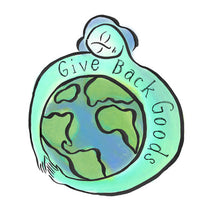
Wildlife Conservation
Why Wildlife Conservation Is So Important

Habitat loss and destruction poses the greatest threat to animals and our natural world. This loss happens through deforestation and destructive fishing, the burning of fossil fuels, industrial-scale mining activities and land-use changes for agricultural expansion. The leading causes of animal extinction are now thought to stem from human activity, with nearly all threatened species at risk. We urgently need to find ways to slow down and reverse this process before more species are lost forever. Historically, the designation of protected areas has proved effective in safeguarding pockets of threatened habitat.
The Human conflict:
Animals and humans are increasingly coming into conflict over space and food, especially on community-wildlife borders. As human populations expand, communities are moving into habitats previously home to wildlife. Whether it's farms built on traditional elephant migratory routes or increasing numbers of livestock and livestock grazing within wildlife territory, the result is key resources like water and land are becoming more scarce and incidences of crop-raiding, livestock predation and conflict have grown.
Climate Change:
Climate change will continue to threaten species around the world. Changes in temperature and rainfall patterns have been observed to alter the native range, food sources, reproduction rates, and predator-prey relationships among flora and fauna.
Animal Loss:
In 2018 we lost the last male northern white rhino, the vaquita porpoise continued its slide toward extinction, and poachers kept targeting pangolins, (the most trafficked animal in the world), and other rare creatures. Almost 8,000 species of fish, amphibian, reptile, mammal and bird are officially categorized as globally threatened. Illegal wildlife trade has had a devastating effect on populations of rhinos, elephants and other wildlife.

The 10 most Critically Endangered Animals Today:
- Amur Leopard - Critically Endangered with less than 70 individuals thought to exist.
- Gorillas -there are only 200-300 Cross River Gorillas, 900 Mountain Gorillas and 850 Lowland Gorillas left in the wild.
- Sea turtles - The Hawksbill turtle has lost 90 percent of its population, the leatherback turtle subpopulations are facing extinction.
- Orangutan- 80% of the population lost in the past 75 years, 104,000 are estimated to remain, mainly as a result of mass deforestation.
- Sumatran Elephant- Less than 2800 are estimated to exist, losing 70% of its habitat to deforestation for palm oil plantations, agriculture & human settlements
- Saola (Asian Unicorn) -This endangered species was discovered in 1992, They are found only in the Annamite Mountains of Vietnam and Laos.
- Vaquita- This little porpoise discovered in 1958 is the rarest marine mammal and on the edge of extinction. They are often killed by illegal fishing operations in marine protected areas within Mexico's Gulf of California. There are only 30 left in its population.
- Tiger- Between 250 to 340 Malayan tigers and less than 400 Sumatran tigers are alive in the world today.
- Rhinos- There are only 58 to 68 Javan rhinos and only 80 Sumatran rhinos left in the wild, Poaching is one of the main reasons for these rhinos dropping in population.
- Pangolin- these small, warrior built mammals are losing the battle against poachers and habitat loss. They are the most trafficked animal in the world, hunted for their scales
_____________________________________________________________________
How You Can Help support wildlife conservation

Adopt an orphan elephant, rhino or giraffe and find out more about the Sheldrick Wildlife Trust and how it embraces all measures that complement the conservation, preservation, and protection of wildlife and habitats. Working across Kenya, their projects include anti-poaching, safe-guarding the natural environment, enhancing community awareness, addressing animal welfare issues, providing veterinary assistance to animals in need, rescuing and hand rearing elephant and rhino orphans, along with other species that can ultimately enjoy a quality of life in wild terms when grown.
_______________________________________________________________________
How your purchases at Give Back Goods support Wildlife Conservation:
Through the purchases of our African Animal bowls and salad servers, 10% goes back to the Sheldrick Wildlife Trust. Also, a portion of the sales of our yoga bags goes back to protect chimpanzee habitats in Uganda.

With each purchase through Give Back Goods you are supporting important causes like clean water, prevention of human trafficking, environmental causes, animal causes and much more. You also support poverty-stricken communities throughout the world through Fair Trade wages & practices. Give Back Goods goal is to give 10% of their profits each year to their partner organizations. With your support, they hope to be able to accomplish this in their second year of business. Another very special part of Give Back Goods is that when you make a purchase you are literally participating in a sustainable approach to decreasing our impacts to our natural resources like overused land for landfill space, impacts to our forests and pollution of our oceans.
We appreciate your support in helping us GIVE BACK!

